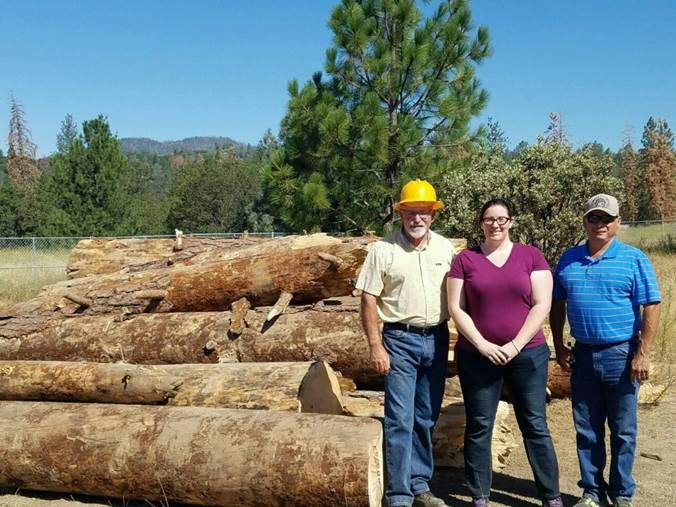Project Spotlight for February 2018: Wood Utilization

Plumas County is a beautiful area full of rich history, culture, lakes, rivers, an endless network of forest roads, and tightly-knit communities. My daily commute to work is arguably the most beautiful out there, a daily reminder of how thrilled I am to call Plumas County home.
It’s beautiful and remote, but struggling from a variety of socioeconomic and environmental challenges since the decline of the timber industry in the 1990s. Indian Valley, the community where Sierra Institute is based, used to host a dozen mills, but none remain today. Today, the community lacks significant industry and large employers beyond Greenville’s Evergreen Market and the high school. Families have left, schools have threatened to close, and unemployment rates are high. There’s no question that socioeconomic solutions are needed.

Meanwhile, mixed conifer forests of the Sierra Nevada are unhealthy following a century of fire suppression and forest management practices that have led to unnaturally dense forests. There is high risk for catastrophic wildfire and bark beetle epidemics, threatening critical watersheds that provide California with drinking water supply, forests with important carbon stores, wildlife habitat, and the safety of human communities residing within the landscape.
Forest health improvement activities are unlikely to occur without an outlet for the low-value small diameter wood material –byproducts of forest restoration— which don’t make the cut for traditional lumber markets. Sometimes material is pile burned, in turn creating air quality issues in forested communities.
Communities of rural forested areas experience these impacts of poor socioeconomic and ecological conditions first hand, and many are working to identify sustainable business opportunities that would move low-value wood material out of dense forests, and benefit community well-being. We refer to the efforts to better the local economy from within the community and recruitment of existing resources as “community-scale.”

It can be incredibly difficult to draw investment into rural and remote areas, and a multitude of other development challenges exist. Yet, there are folks already working to create and implement solutions, and these individuals are incredibly tenacious. Check out some inspiring examples of community-scale wood utilization on the Prince of Wales island in Alaska and in Wallowa County in Oregon, or what some of our partners in California are up to.
Next week, I’ll begin to focus on some of Sierra Institute’s efforts to develop sustainable rural communities and generate business opportunities through utilization of low value wood from forest restoration activities, including the Plumas County Health & Human Services Center Biomass Project and the Crescent Mills Wood Products campus.




